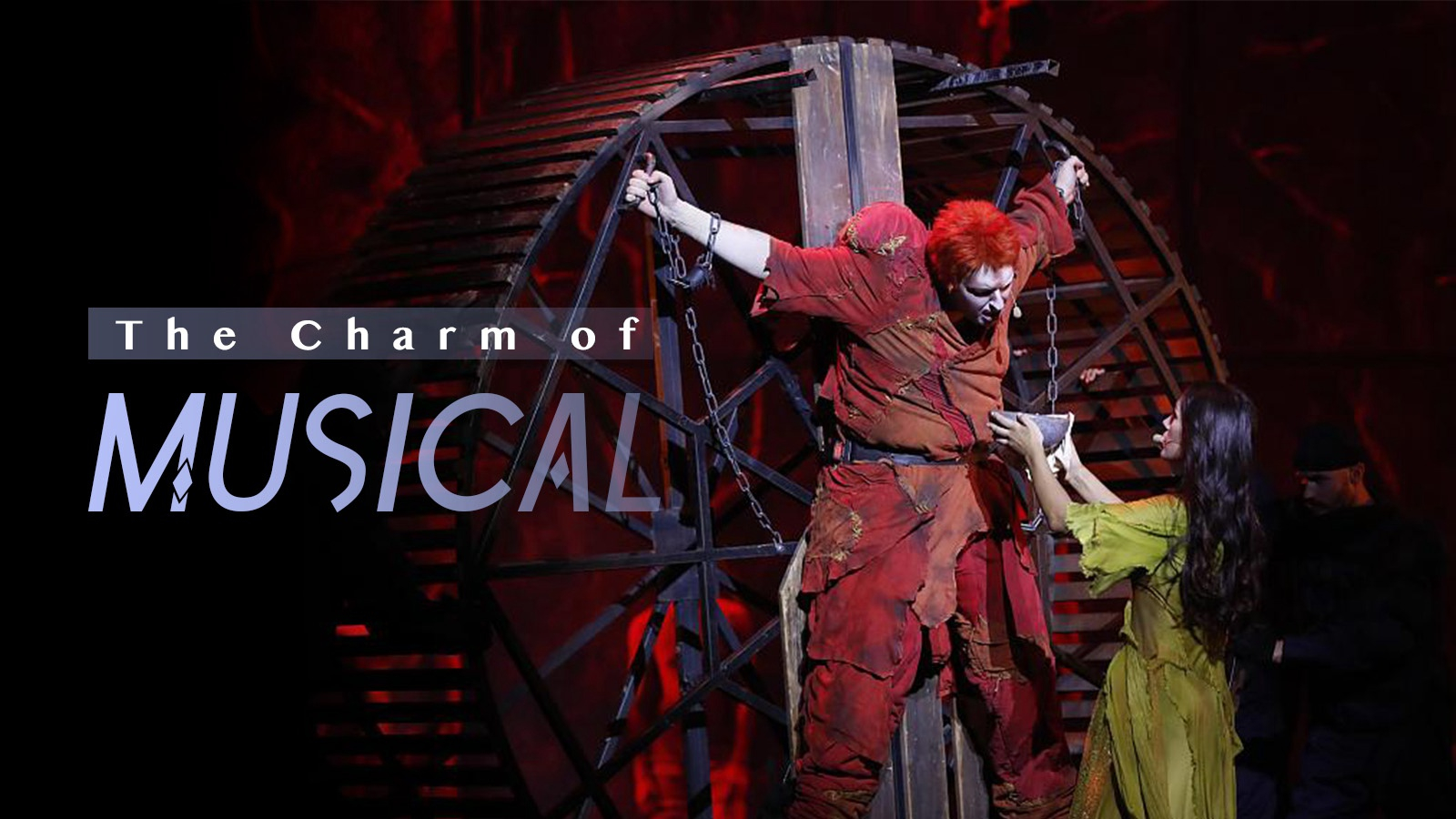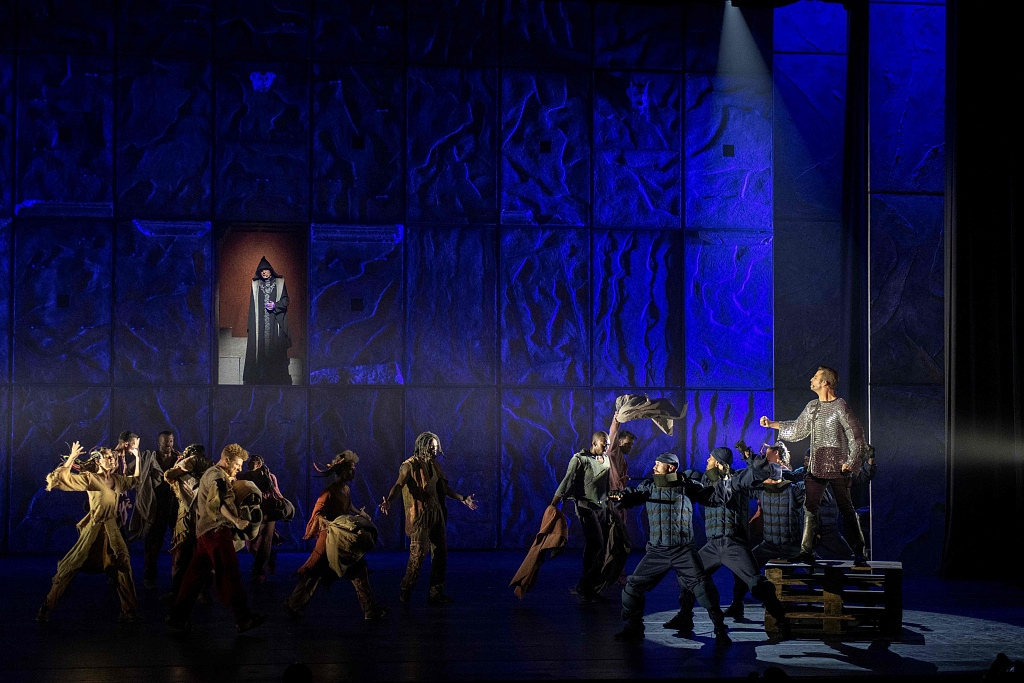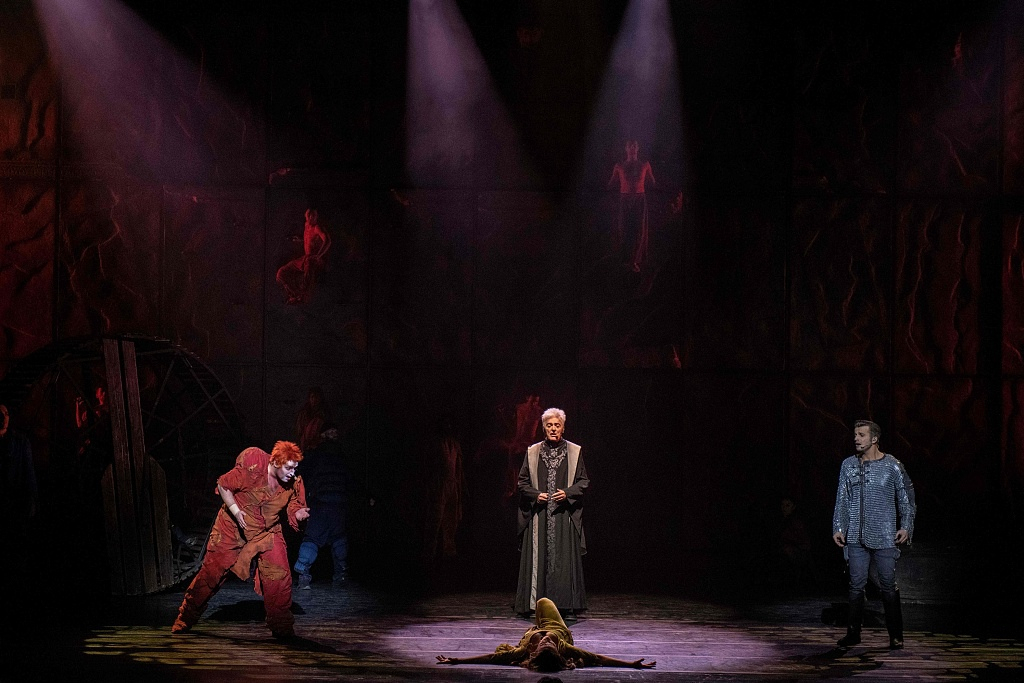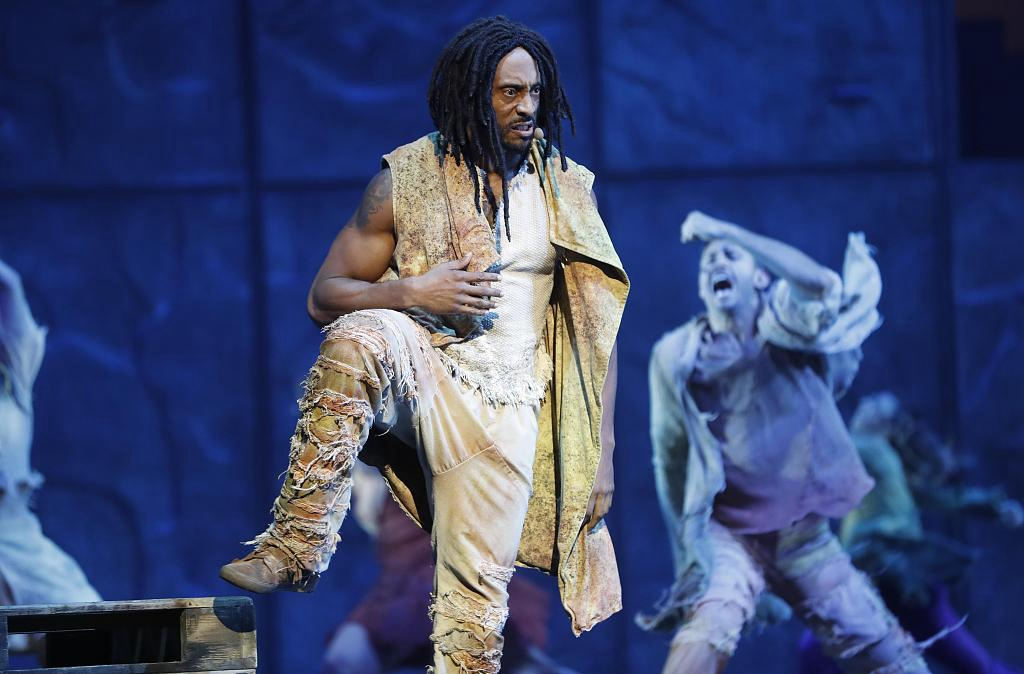

It was a big surprise when the audience chorused the song “Le Temps ses Cathédrales” along with the artists during the curtain call, after the first performance of the French musical “Notre Dame de Paris” in Beijing.
“I was amazed by the fluency of Beijing residents’ French,” an audience member exclaimed on her Sina Weibo account, a Twitter-like social media platform. “Since when does everyone speak French?”
And it is not for only one night, nor is it only in Beijing.

A scene of musical "Notre Dame de Paris". /VCG Photo
When the French musical returned to make its 20-week China tour this year, the Chinese audiences have shown their hospitality more than ever.
The musical was expected to travel to Chinese cities including Shanghai, Hangzhou, Beijing, Tianjin, Harbin, Xiamen, and Xi’an. Even so, it was not easy to get a ticket. Many had to travel to another city to watch the performance.
Charm of music
In fact, for many Chinese people, “Notre-Dame de Paris” opened a new chapter for them to get to know the French musical, which is quite different from the U.S. Broadway musical.
The show debuted on September 1998, in Paris, and became an instant success. The musical later toured around the world and was well received in many countries including Britain, and the U.S., and was translated into at least eight languages.
The story was based on the classic novel of Victor Hugo, which is set in 1482 during the reign of Louis XI. Three men, Archdeacon of Notre Dame Frollo, Captain of the Royal Archers Phoebus, and Quasimodo, the bell-ringer, were all attracted to young gypsy girl Esmeralda.

A scene of musical "Notre Dame de Paris". /VCG Photo
Composed by Richard Coccinante, the musical contains more than 50 songs, pushing forward the plotline of the musical. Not a line of dialogue was involved. By combining various musical elements such as French chansons, gypsy music, and church music, it was more like a pop concert than traditional musical.
As for the performances, electroacoustic musical instruments replaced the orchestra, and the stage was of a simple and symbolic modern style. The dance sections combine ballet, modern dance, and even acrobatics.
No wonder some say it is more like a rock&roll concert than a musical.
The cast of China tour includes Daniel Lavoie, who is widely known as “Frollo” in the original 1998 version, Angelo del Vecchio, Hiba Tawaji, Elhaida Dani, and Richard Charest also attracted many fans.
Musicals in China
Seventy years after its first China tour, the return of “Notre Dame de Paris” is embraced with a warm welcome and passion. Back in 2002, not many people walked into the concert hall and sit down for the performance.
At that time, China’s musical market was barely awakening and the introduction of “Les Misérables” brings it's musical charms to the Chinese audience for the first time.

A scene of musical "Notre Dame de Paris." /VCG Photo
As of 2016, the general box office earning for musicals in China reached 174 million yuan (24.35 million U.S. dollars), accounting for two percent of all the performances in China that year. The market has been growing, but it's far from mature.
Most of the musicals are staged only in metropolises including Beijing and Shanghai, and audiences in the second and third-tier cities hardly have the opportunity to watch a show of this kind.
Meanwhile, most of the popular musicals in China are still big hits introduced from overseas, such as “Notre Dame de Paris.” In 2015, 64.2 percent of the musicals staged in China were foreign products. In 2016, foreign musicals still accounted for 40.8 percent.
The market is still waiting for a original Chinese musical, and the time for musicals is thriving.
Cover image: Li Jingjie

Copyright © 2018 CGTN. Beijing ICP prepared NO.16065310-3
Copyright © 2018 CGTN. Beijing ICP prepared NO.16065310-3